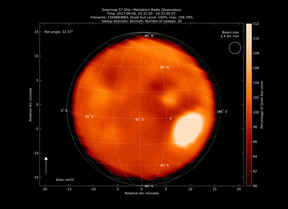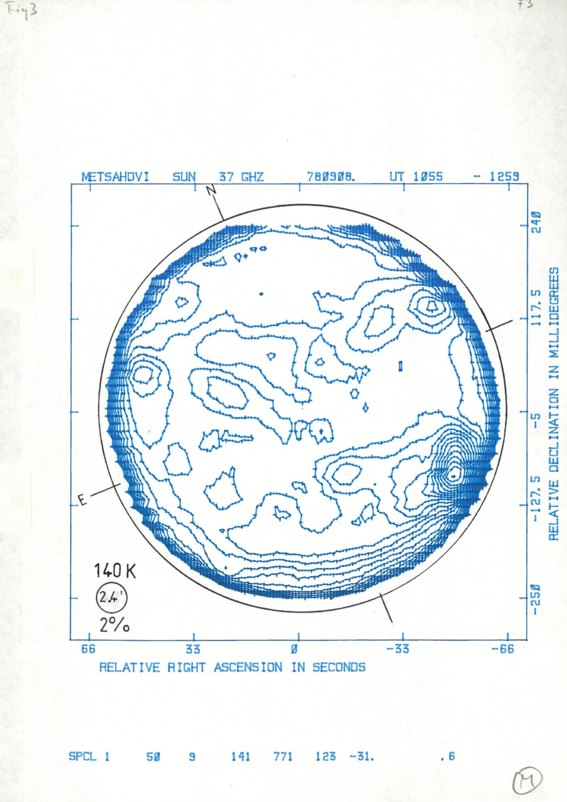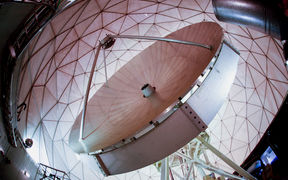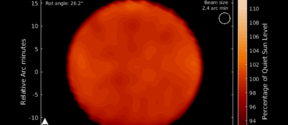Publishing the data can lead to new discoveries
People examine things from different perspectives, and this is also the case with solar radio data. Tammi emphasises that Metsähovi Radio Observatory wants to find people from different fields who may be interested in the data.
“Researchers in different fields can find similarities with data from their own projects. This makes it possible to find and get more information on various phenomena and problems that have not previously been discovered”, Tammi states.
Local, national and even international communities of researchers have shown interest in the data from the Sun. Metsähovi's expertise and data have also been of interest to artists, and the data has been used as part of art exhibitions and even in master's degrees in art. “Our solar data has been used in artwork in ways we would never have imagined”, Tammi adds.
The data set is now openly available on Fairdata service.
Go to Metsähovi's Open data siteView solar data at Fairdata servic















